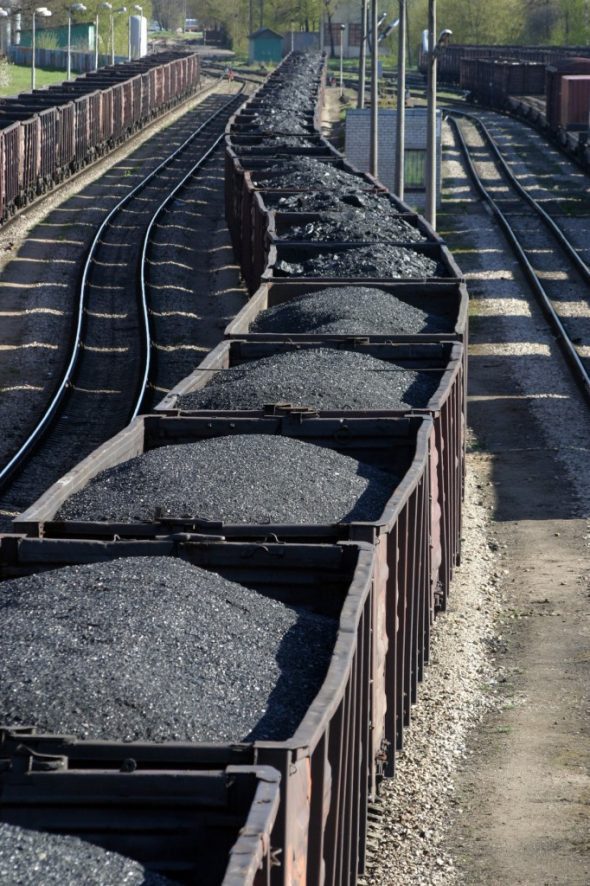Australian fossil fuel companies – the same companies that populate the portfolios of most major Australian super funds – are risking more than $100 billion on the pursuit of projects that could be uneconomic in the face of climate action and cheap renewables, a new report has warned.
Australian coal miners, meanwhile, are headed into a future where no new mines are needed, full stop. The report, published by Carbon Tracker on Wednesday, says that in a 2˚C world, coal demand would be met from existing mines only.
“It is the end of the road for expansion of the coal sector,” the report says, with capital expenditure of $177 billion on new projects and $42 billion on existing ones rated unnecessary over the next decade.

This is bad news for Australia, and for China, the US and Indonesia – all of which have the greatest exposure, accounting for over 90 per cent of unneeded coal mine investment.
Across all the fossil fuels, though, the report calculates that worldwide, a total of $2.2 trillion risks being invested in stranded fossil fuel assets in the next decade, as the world acts to limit climate change to 2°C or below.
It’s a lot of money, although a great deal less, it should be noted, than the $100 trillion amount Citigroup came up with in its August report on stranded fossil fuel assets, which it based on the perhaps optimistic assumption that the Paris climate talks, which start next week, will be a success.
The Carbon Tracker report – The $2 trillion stranded assets danger zone: How fossil fuel firms risk destroying investor returns – maps out coal, oil and gas supply that makes neither financial nor climate sense, and how this affects both listed and public companies.
It measures this by tallying up each nation’s exposure to unneeded fossil fuel projects to 2025, that are at risk of becoming stranded as the world decarbonises.
In these rankings, Australia claims a spot in the top five, behind the US (ranked number 1) with $412 billion at risk; Canada ($220 billion); China ($179 billion) and Russia ($147 billion).
“No new coal mines will be needed, oil demand will peak around 2020, and growth in gas will disappoint industry expectations,” the report finds, highlighting the danger zone between industry business-as-usual strategies and action that would be needed to meet increasingly ambitious UN climate pledges.
“Too few energy companies recognise that they will need to reduce supply of their carbon-intensive products to avoid pushing us beyond the internationally recognised carbon budget,” said James Leaton, head of research at Carbon Tracker and co-author of the report
“Clean technology and climate policy are already reducing fossil fuel demand – misreading these trends will destroy shareholder value. Companies need to apply 2˚C stress tests to their business models now.”
The companies singled out as representing the biggest risk in a demand misread to the climate and shareholders alike, include oil majors Royal Dutch Shell, Pemex, Exxon Mobil, and coal miners Peabody, Coal India, and Glencore.
According to the report, around 20-25 per cent of oil and gas majors’ potential investment is on projects that will not be needed in a 2˚C scenario, and cancelling them would mean going ex-growth.
But according to report co-author and former Deutsche Bank climate analyst Mark Fulton, thermal coal has “the most significant overhang of unneeded supply” of all fossil fuels on any scenario.
“No new mines are needed globally in a 2˚C world,” Fulton said.
Carbon Tracker CEO, Anthony Hobley, said business history was littered with examples of incumbents who failed to see change coming – and the energy industry was next in line.
“Fossil fuel incumbents seem intent on wasting capital trying to hold onto growth by doing what they have always done rather than embracing the energy transition and preserving value by adopting an ex-growth strategy,” Hobley said.
“Our report offers these companies both a warning and a strategy for avoiding significant value destruction.”
As an end note, Carbon Tracker also notes that for 24Gt of CO2 to be captured by carbon capture and storage (CCS) by 2035 – as per the IEA 450 scenario – this would require CCS to grow to a level 150 times where it is today.
“Delays in CCS could significantly increase the reductions in coal that will be needed and the IEA has estimated that a 10-year delay in large-scale CCS deployment from 2020 to 2030 could cost fossil fuel producers $1.35 trillion in lost revenues,” the report says.








